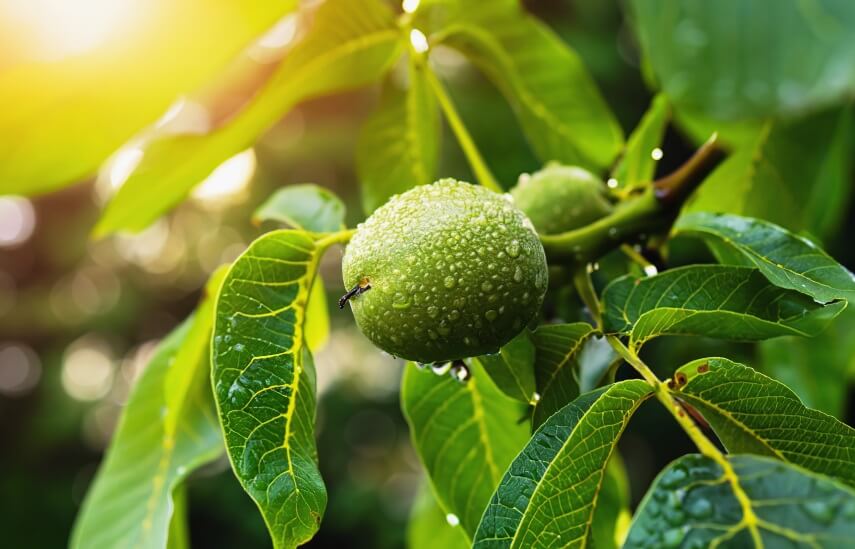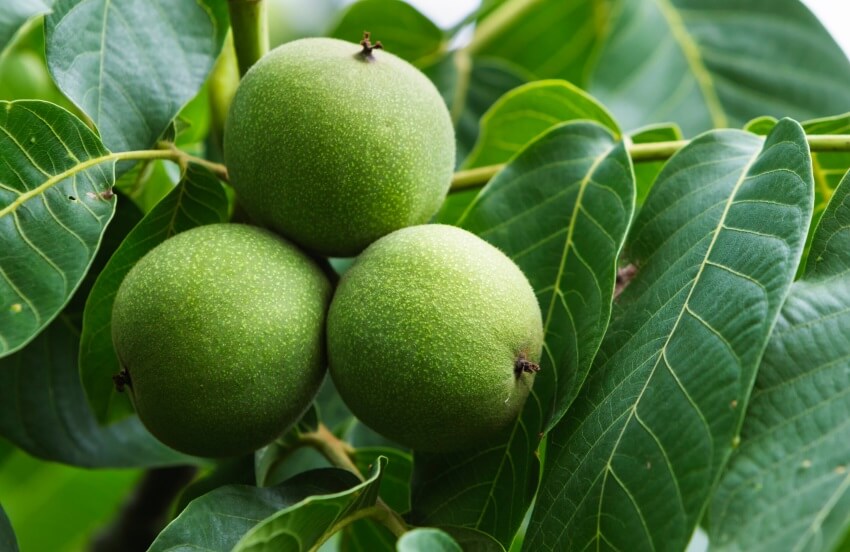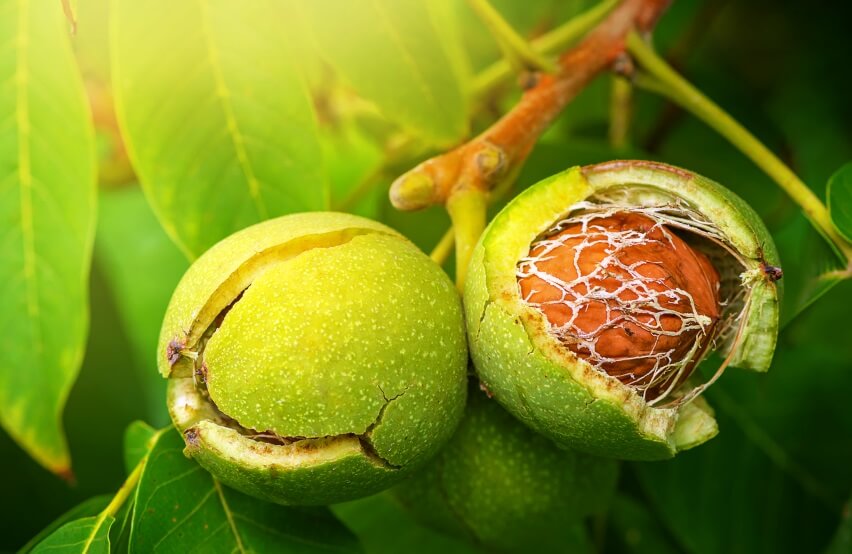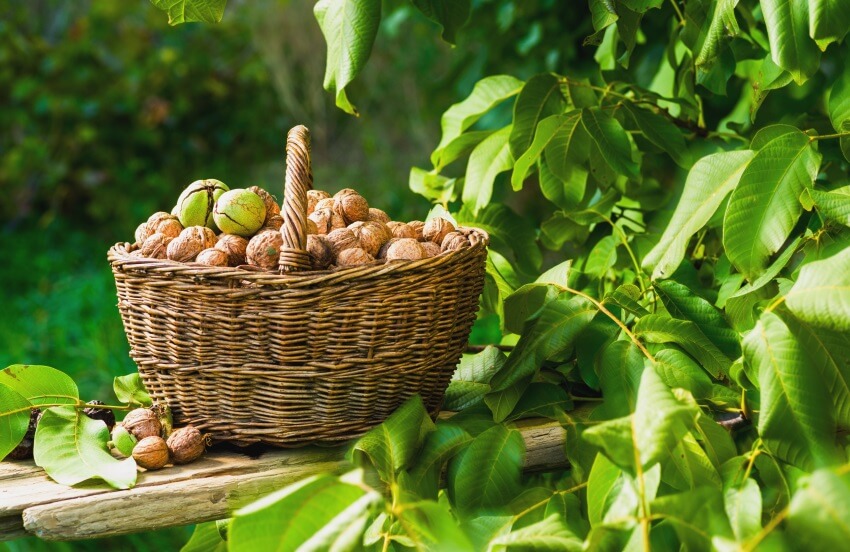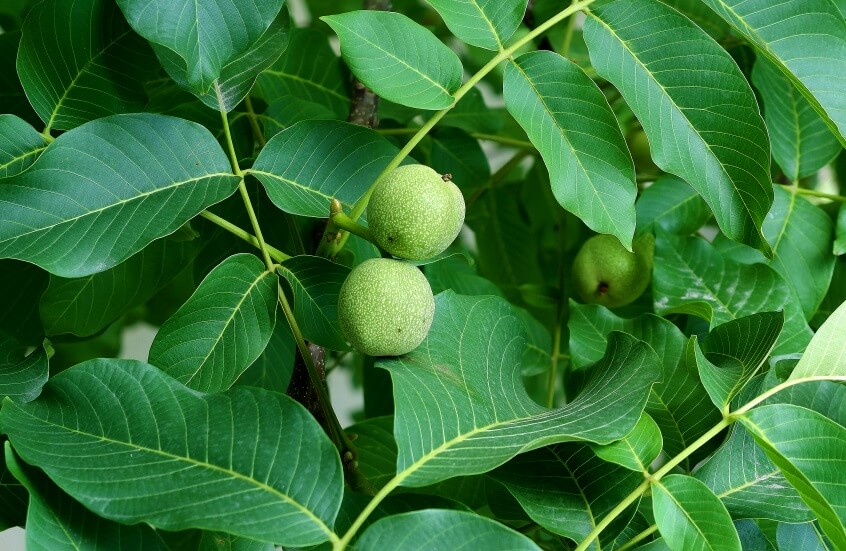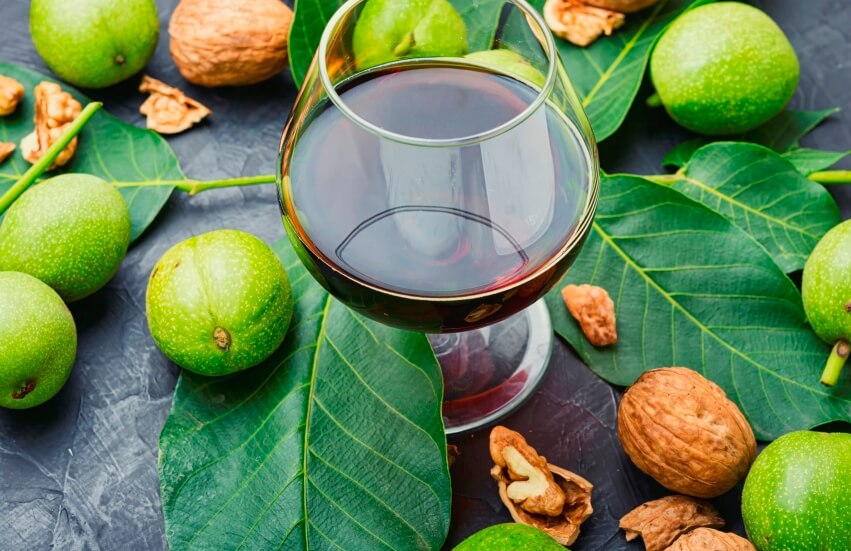Walnut trees (Juglans spp.) are renowned for their delicious and nutritious nuts, but their leaves also offer a myriad of health benefits that are often overlooked. Packed with phytochemicals, antioxidants, and essential nutrients, walnut leaves have been used for centuries in traditional medicine for their therapeutic properties. In this article, we explore the potential health benefits of walnut leaves, recognizing their diverse applications and scientific evidence.
If you are interested in this topic, you can also read
<<Beetroot Leaf Benefits>> and <<Health Benefits Of Violets >> articles.
Health Benefits Of Walnut Leaves
The following outlines some of the significant benefits of walnut leaves:
Rich Source Of Antioxidants
Walnut leaves are rich in antioxidants, including phenolic compounds, flavonoids, and tannins, which help protect the body against oxidative stress and cellular damage. These antioxidants scavenge harmful free radicals, reducing the risk of chronic diseases such as cancer, cardiovascular diseases, and neurodegenerative disorders. Regular consumption of walnut leaves may contribute to overall health and longevity [1, 2].
Anti-inflammatory Properties
Studies have shown that extracts from walnut leaves possess potent anti-inflammatory properties thanks to their high content of bioactive compounds such as quercetin and ellagic acid. These compounds help alleviate inflammation in the body, reducing pain and swelling associated with conditions like arthritis, asthma, and inflammatory bowel disease. Incorporating walnut leaf tea or supplements into your daily routine may help manage chronic inflammation and improve overall well-being [3].
Supports Heart Health
Walnut leaves contain compounds like juglone and juglandin, which have been linked to cardiovascular health benefits. Juglone has demonstrated effectiveness in decreasing blood pressure and cholesterol levels, mitigating the risk of blood clots, and enhancing blood vessel function. Regular consumption of walnut leaf extracts may aid in sustaining healthy blood pressure and cholesterol levels, thereby diminishing the likelihood of heart disease and stroke [4, 5].
Diabetes Management
Research suggests that walnut leaves may offer potential benefits for individuals with diabetes. Compounds found in walnut leaves, such as juglans, have been shown to improve insulin sensitivity, regulate blood sugar levels, and inhibit glucose absorption in the intestines. Incorporating walnut leaf supplements or tea into a balanced diet may help individuals with diabetes better manage their condition and improve glycemic control [6].
Skin Health And Wound Healing
Traditionally, applying walnut leaf extracts topically has been known to enhance skin health and expedite the healing process of wounds. The antimicrobial and astringent properties of walnut leaves help prevent infections, reduce inflammation, and promote tissue regeneration. Applying walnut leaf poultices or ointments to cuts, burns, and minor skin irritations may help soothe discomfort and promote faster healing [7].
Walnut Leaf Nutritional Info
Walnut leaves, like many other plant parts, contain a variety of nutrients and bioactive compounds that contribute to their nutritional value. Although there is limited specific data regarding the nutritional composition of walnut leaves compared to the nuts themselves, these leaves have historically been utilized in folk medicine and culinary traditions within particular cultures. Here are some potential nutritional components found in walnut leaves:
Phytochemicals
Walnut leaves are rich in phytochemicals, including phenolic compounds like flavonoids and phenolic acids, which have antioxidant properties. These compounds neutralize detrimental free radicals within the body, consequently diminishing oxidative stress and inflammation [8].
Vitamins
Walnut leaves may contain vitamins such as vitamin C, which is known for its immune-boosting properties, and vitamin A, essential for vision health and skin maintenance.
Minerals
Walnut leaves may also contain minerals like calcium, magnesium, and potassium. Calcium is crucial for bone health, and magnesium plays a role in muscle function and energy metabolism. At the same time, potassium helps regulate blood pressure and fluid balance.
Nutrient accumulation in walnut tree young mature leaves [9]
| Macro-Nutrient | Mg/Leaf |
|---|---|
| Total N | 87.3 |
| P | 5.1 |
| K | 48.7 |
| Ca | 103.1 |
| Mg | 11.5 |
| Micro-Nutrient | µg/Leaf |
| Fe | 910 |
| Mn | 389 |
| Cu | 38 |
| Zn | 158 |
Fiber
Like many plant-based foods, walnut leaves may contain dietary fiber, which is essential for digestive health, promoting regular bowel movements, and preventing constipation.
Essential oils
Walnut leaves may contain essential oils that contribute to their aroma and flavor. These oils may have antimicrobial properties and could potentially offer health benefits [10].
Walnut Leaf Benefits For Male
Walnut leaves, like many other parts of the walnut tree, possess specific properties that may offer benefits for male health. Here is a potential benefit of walnut leaves for men:
Libido And Sexual Health
While direct scientific evidence is limited, some traditional practices suggest that walnut leaves may have aphrodisiac properties, potentially enhancing libido and sexual performance. However, more research is needed to validate these claims [11].
Walnut Leaf Benefits For Female
While research specifically on the benefits of walnut leaves for female health is limited, walnut leaves, like many other parts of the walnut tree, contain certain compounds that may offer potential health advantages. Here are some potential benefits of walnut leaves for women:
Treating Fibrocystic Breast
Incorporating walnut leaves into a blend of herbs for managing fibrocystic breast disease can substantially improve the treatment’s efficacy [12].
Walnut Leaf Side Effects
While walnut leaves are often used in traditional medicine and herbal remedies, it is important to be aware of potential side effects, especially if consumed in large quantities or if you have allergies. Here are some possible side effects of walnut leaves [13, 14]:
Allergic Reactions
Some individuals may be allergic to walnut leaves, just as they might be allergic to other parts of the walnut tree, such as the nuts or the pollen. In rare cases, allergic reactions can range from mild symptoms such as itching, rash, or hives to more severe reactions such as difficulty breathing or anaphylaxis.
Skin Irritation
Direct contact with walnut leaves may cause skin irritation in sensitive individuals. This can manifest as redness, itching, or a rash. Handling walnut leaves with care is advisable, especially if you have sensitive skin.
Gastrointestinal Distress
Ingesting large amounts of walnut leaves, particularly in the form of teas or extracts, may lead to gastrointestinal issues such as stomach upset, nausea, vomiting, or diarrhea. Consuming walnut leaves in moderation is important, and discontinue use if you experience any adverse gastrointestinal symptoms.
Interaction With Medications
Walnut leaves contain various compounds that may interact with certain medications. If you are taking any prescription medications or supplements, consult with your healthcare provider before using walnut leaves medicinally to avoid potential interactions.
Pregnancy And Breastfeeding
Limited information is available about the safety of consuming walnut leaves during pregnancy and breastfeeding. It is best to avoid using walnut leaves medicinally during these times unless directed by a healthcare provider.
Other Potential Side Effects
Other potential side effects of walnut leaves may include headache, dizziness, or changes in blood pressure, though these are less commonly reported.
As with any herbal remedy or supplement, it is essential to use walnut leaves cautiously and under the guidance of a healthcare professional, especially if you have any underlying health conditions or are taking medications. If you experience any concerning symptoms after using walnut leaves, seek medical attention promptly.
How To Consume Walnut Leaves?
While walnut leaves are not commonly consumed as food, they are often used in herbal remedies and traditional medicine. Here are some ways walnut leaves can be taken or exploited:
Herbal Tea
One of the most common ways to use walnut leaves is by brewing them into a tea. To make walnut leaf tea, you can use fresh or dried leaves. Simply steep a few walnut leaves in hot water for several minutes, then strain and drink the tea. You can sweeten the tea with honey or add other herbs or spices for desired flavor [15].
Tincture Or Extract
Walnut leaf tinctures or extracts are another way to consume walnut leaves. These concentrated forms can be added to water or juice and taken orally.
Adhere to the dosage instructions indicated on the product label or seek advice from a healthcare professional for proper guidance [16].
Topical Applications
Walnut leaves can also be used topically for skin conditions such as eczema, psoriasis, or insect bites. You can crush fresh walnut leaves and apply them directly to the affected area, or you can make a poultice by steeping crushed leaves in hot water, wrapping them in a cloth, and applying a warm compress to the skin [17].
Capsules Or Tablets
Some herbal supplements contain powdered walnut leaves encapsulated or compressed into tablets for convenient consumption. These can be taken orally with water according to the recommended dosage [18].
Cooking And Culinary Uses
While walnut leaves are not typically consumed as a food item themselves, they can be used in cooking to impart flavor to dishes. For example, you can use fresh walnut leaves to wrap foods for grilling or steaming, similar to grape leaves in Mediterranean cuisine. However, remember that walnut leaves contain compounds that may cause bitterness, so they are not commonly used in culinary applications.
If you have any underlying health conditions or concerns, consult a healthcare professional before incorporating walnut leaves into your diet or wellness routine. Additionally, always ensure that the walnut leaves you use are sourced from a reputable supplier and have not been treated with pesticides or other chemicals.
Conclusion
Walnut leaves are a versatile botanical remedy with many potential health benefits. From antioxidant-rich tea infusions to topical ointments for skin ailments, walnut leaves offer a natural and effective way to support overall health and well-being. While more research is needed to understand their mechanisms of action and therapeutic potential fully, incorporating walnut leaves into your daily routine may offer a simple yet powerful way to harness the healing properties of nature.


